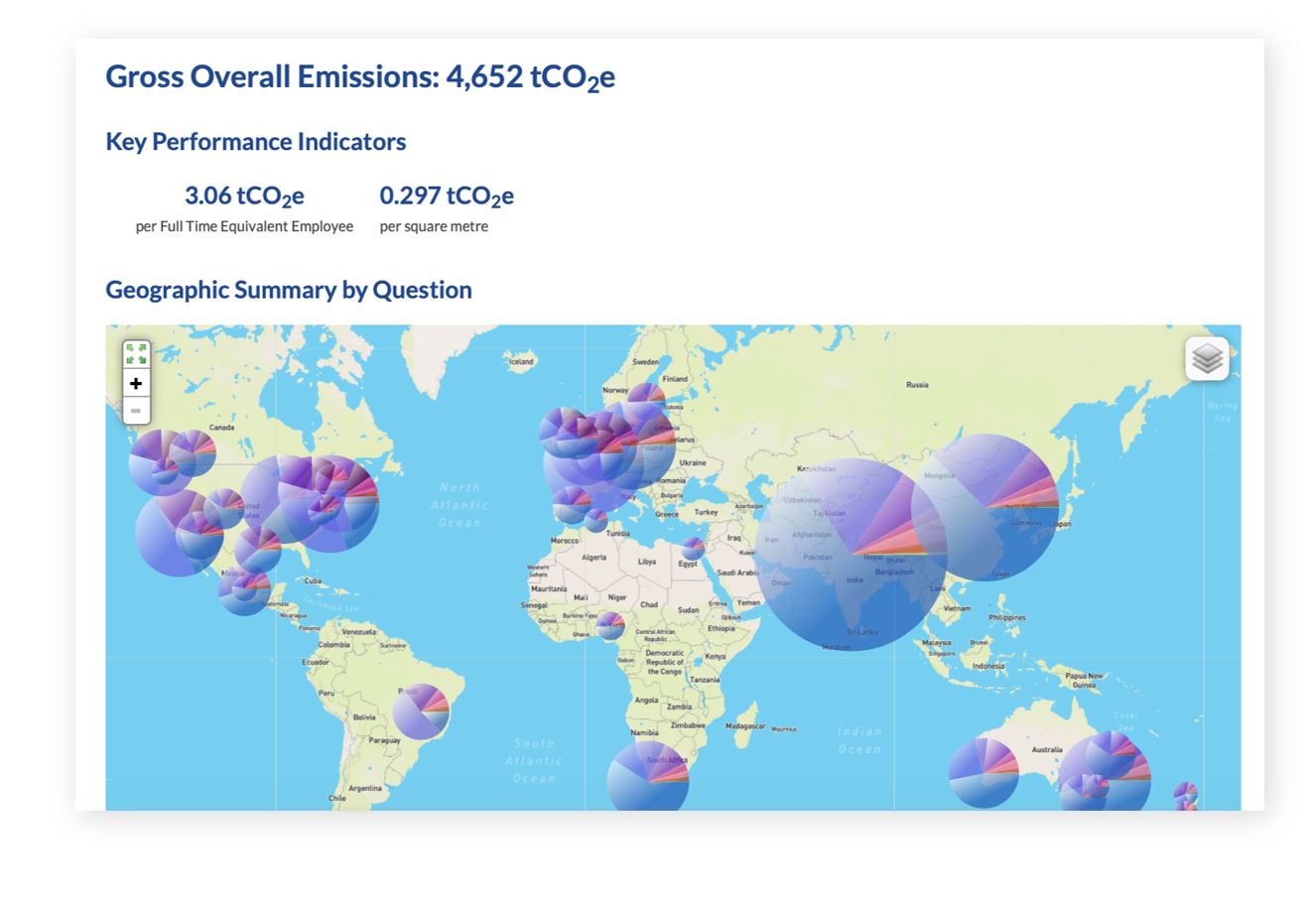Case Study: Measuring a Global Software Company’s Carbon Footprint
“Carbon accounting will likely become a necessity for many businesses, on par with financial accounting. In fact, it may soon be mandated for companies of a certain size to keep inadequate climate records.”
-Ben Matek
CLEAResult Carbon Consulting Program Manager
Background
The intersection of science and accounting has given rise to the advent of carbon accounting. Carbon reporting procedures are becoming more standardized as the number of companies monitoring their GHG emissions increases. In 2021, the GHG Protocol introduced its GHG Accounting and Reporting Standard for the financial industry. What’s more, Canada and many European countries now require carbon reporting for businesses. Plus, in the U.S., the Securities and Exchange Commission (SEC) and the state of California both recently proposed stricter carbon disclosure rules.
Investors are increasingly demanding accurate, standardized reporting from companies so they can accurately assess their climate risk. Additionally, many large corporations now require vendors to report and lower their GHG emissions to reduce their own indirect Scope 3 emissions.
As pressure to comply increases, companies dedicated to keeping apace often face the below challenges:
- Automating and streamlining data capture
- Ensuring accuracy of data
- Analyzing data and determining next steps
- Customizing reports for different audiences
The Challenge
A global asset management software company, recognizing the opportunity to lower its impact, reached out to our Carbon Consulting team for ideas. Our team of engineers and climate experts consulted with the client to calculate their worldwide carbon footprint and identify opportunities to reduce it.
The company had already begun collecting basic spend data from its facilities. However, once we reviewed the files with them, it became apparent they‘d left out important emission generating activities like electricity and natural gas consumption. What’s more, our client lacked a comprehensive system to monitor and report the accumulated data, thereby making it difficult to analyze and act on the gathered information.
 Our Solution
Our Solution
After determining the additional information needed, we worked with the client to collect the additional data needed. We then entered all of the relevant data into CLEAResult ATLASTM Carbon, our signature carbon accounting solution. It features a customizable dashboard to monitor a company’s progress and can be synced with traditional accounting software programs to streamline data entry, improve accuracy and reduce human error.
Next, we determined our client’s overall carbon footprint and compared emissions data by office location. Then, we identified the greatest carbon reduction opportunities—both company-wide and location-specific. Utilizing the figures generated by CLEAResult ATLASTM Carbon, we provided our client’s current carbon footprint as well as geographical breakdowns indicating which offices generate the highest levels of GHG emissions.
The Results
Equipped with our the information we provided in our report, our client can now make better decisions about budgeting for decarbonization as well as which energy-saving measures to implement first. Lastly, their reports can be customized for both internal and external distribution.
In addition to lowering their energy costs and averting GHG emissions, our client has gained a better understanding of its energy use patterns and how to address them. As a result, their actions will help establish them as a thought leader in sustainability and attract prospective clients.
Next Steps
A subsequent energy audit of their office spaces will help us understand the nuances of their energy usage so we can better identify which improvements will have the greatest impact. Once all the possible energy efficiency improvements have been addressed, we’ll work together to explore further ways to reduce their carbon footprint, such as renewables, electrification and carbon offset purchases.
_________
For more on CLEAResult’s approach to carbon reduction, visit our Decarbonization web page.